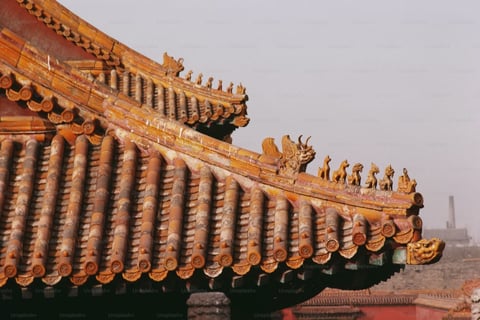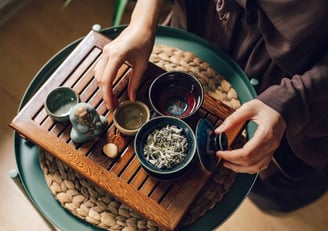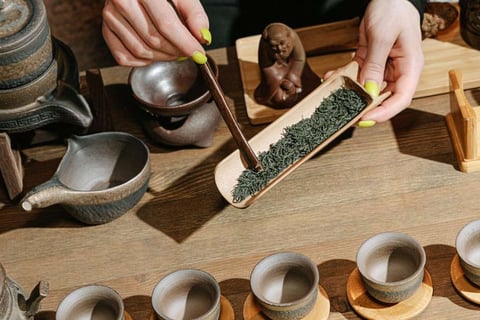When did the history of Chinese tea begin?
Chinese tea history begin at least 2000 years ago
When did the history of Chinese tea begin? Over the years, opinions on this issue have been divergent. According to the Tang Dynasty's Lu Yu's "Tea Classics", "Its names are five, one tea leaf, two stems, three berries, four tea leaves, and five mushrooms". This means that the five names "tea leaf, stem, drum, tea, and mushroom" refer to one thing. The same result can be obtained when referring to the meaning of these characters in Er Ya. The "tea" is recorded in the Book of Songs. If so, the history of Chinese tea is at least 2000 years old.
But "tea" and what we now call "tea" are two different things. In the early days, "tea" was more like a refreshing and anti-alcoholic drug than a common drink now. If it was not a patient, who would drink the medicine soup as water? Like most medicinal materials, "tea" originally came from wild plants and has no taste. Although it is unpleasant and rare, some people like it. Wang Meng, the Situ of the Jin Dynasty, not only loved drinking, but also forced others to drink, which made people afraid to visit his house. The tea soup made by Wang Meng was once called "water distress", which was a joke. It can be seen that this tea is not a popular drink like tea.
Lu Yu's three volumes of The Classic of Tea are masterpieces. Since then, the "tea ceremony" has become a specialized subject. After the Jin and Tang Dynasties, the fashion of scholar-bureaucrats drinking tea was prevalent. There was no more "water distress" to talk about. It could even be exaggerated to the extent that they drank tea and became immortal. It is believed that this is not because the tastes of drinkers change rapidly, but because of the great progress in tea planting, tea making, and tea brewing technology, "tea" has replaced "tea", and it has made a brilliant debut on the stage of Chinese culture as a beverage, which continues to this day. The custom of drinking tea began in the prosperous age of the Tang Dynasty.


The mainstream tea cooking method in the Tang and Song Dynasties was boiling. In Mandarin, the tea was first dried or roasted, crushed into powder, and boiled in a pig iron pot. However, it should not be overcooked and should be controlled within the "three boiling" range. The drinking method of crushing and boiling the tea powder R is still available today. When I was young in Xinjiang, I often drank a kind of Hunan brick tea, which is also tea powder. It can be directly boiled in a kettle. It can be drunk directly or made into milk tea. It tastes good. Lu Yu said in the Tea Classic that the tea soup cooked in this way "tastes mellow and beautiful", which is not necessarily an exaggeration.
The drinking method of Matcha in Japan today is similar to that of ‘’ordering tea‘’, which should be from the same source. During the Tang and Song Dynasties, China was a cultural exporter, and it was reasonable for neighboring countries to follow suit. It is worth mentioning that this method of "ordering tea" is a hundred times more complicated than "frying tea", and later it even developed into a form of competition, namely "tea fighting". This kind of complicated tea-cleaning method has built a mountain-high barrier to the popularization of tea drinking. In the social environment at that time, there was also a concept that "all tea tastes good, and all people who cook and sip it often taste it". This kind of behavior of upper-class people seeking differentiation has not changed for thousands of years.
However, all the lifestyles competed by the upper class are inevitably destined for two ends. One is that they are directly eliminated by history, and the other is that they are popularized among the people. The fate of "ordering tea" is the one that is eliminated.


In the Ming Dynasty, the way of drinking lake tea was similar to the way of brewing whole leaves today, and the speed and degree of elimination of the "ordering tea method" were amazing. Later, Chinese people wanted to reproduce the method of "ordering tea", but they couldn't make a stone mill to grind tea powder. They had to import one from Japan to use. It was really killing them.
The whole-leaf brewing method makes Che Tea simple and quick, and also makes the tea-drinking trend more popular. More importantly, the emergence of this tea-making method has broken all kinds of complicated "ceremonies", leaving only the most basic "etiquette" and "techniques", and there is a taste of enlightenment in it. Presumably, the first ancient man who advocated the whole leaf tea making method, whether a commoner or a noble, was a man of temper and temperament, who ran against the common people.
The method of cleaning tea has lasted for thousands of years, from "frying tea" in the Tang Dynasty to "ordering tea" in the Song Dynasty to "brewing tea" in the Ming Dynasty. Even the well-known method of lake tea is an old tradition with a history of hundreds of years.
It can be predicted that there will be some changes in the method of tea cleaning in the future, and there will always be new trends to replace the current habits. Therefore, I suggest that your tea friends do not have to stick to the old rules and be timid when drinking tea in the lake. Some people are born to maintain tradition, while others are born to break tradition. Diet is an endless way of exploration, and it will never be perfect. Perhaps your attempt to break the tradition today is a new trend that people will follow in the next hundred years.
Some people think that breaking tea into powder or boiling it with fire can't produce good tea. In fact, this view is very one-sided. Sticking to the stereotypes will hinder the pace of personal tea tasting. For example, some aged Pu'er tea or Tieguanyin tea has a weak taste, but if you add some cooking, you can force out the fragrance of tea, which is also unique to drink. As for tea powder, many Europeans drink tea with tea powder. Chinese people always prefer "big leaf tea", but in fact, tea powder also has the advantage of being easy to brew the essence of tea. Sometimes, when making mixed tea or tea bags, it's no harm to grind them. I often grind and brew fermented tea like Dianhong and Yixing Black Tea 9. The taste is very pleasant.
This method of brewing tea is also called "decocting tea". Although "decocting tea" has become the name of a tea variety in China, its origin is actually a method of brewing tea. Now it is also a good idea to use the method of "frying tea" occasionally.


As time passed, the Song Dynasty was the time to ‘’order tea‘’. With the progress of grinding technology, people can grind tea more and more finely, which has evolved from "powder" to "powder". First, the tea leaves are steamed and pressed (now "fried tea" refers to the tea leaves that have been steam treated) and then ground into powder. When drinking, the tea leaves are flushed with boiling water, similar to brewing instant coffee, and then stirred with something called "tea". The tea powder is integrated with the water. Finally, the thick "tea paste" is drunk.
